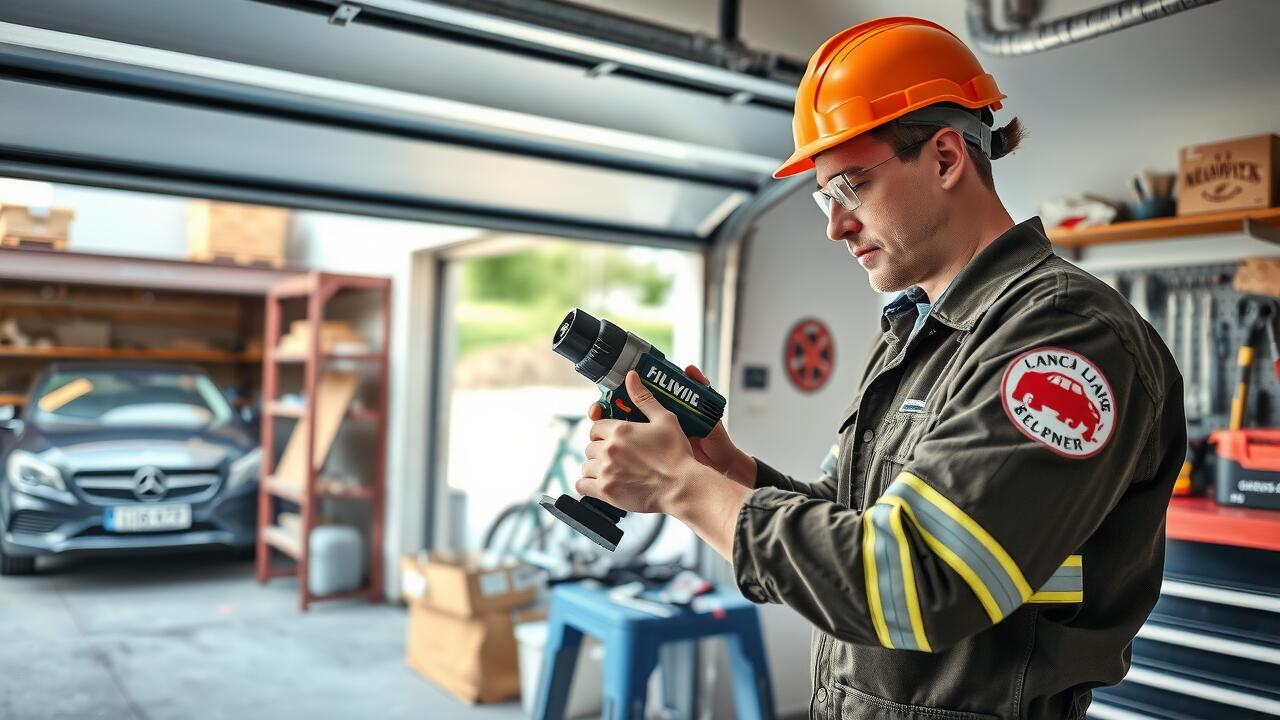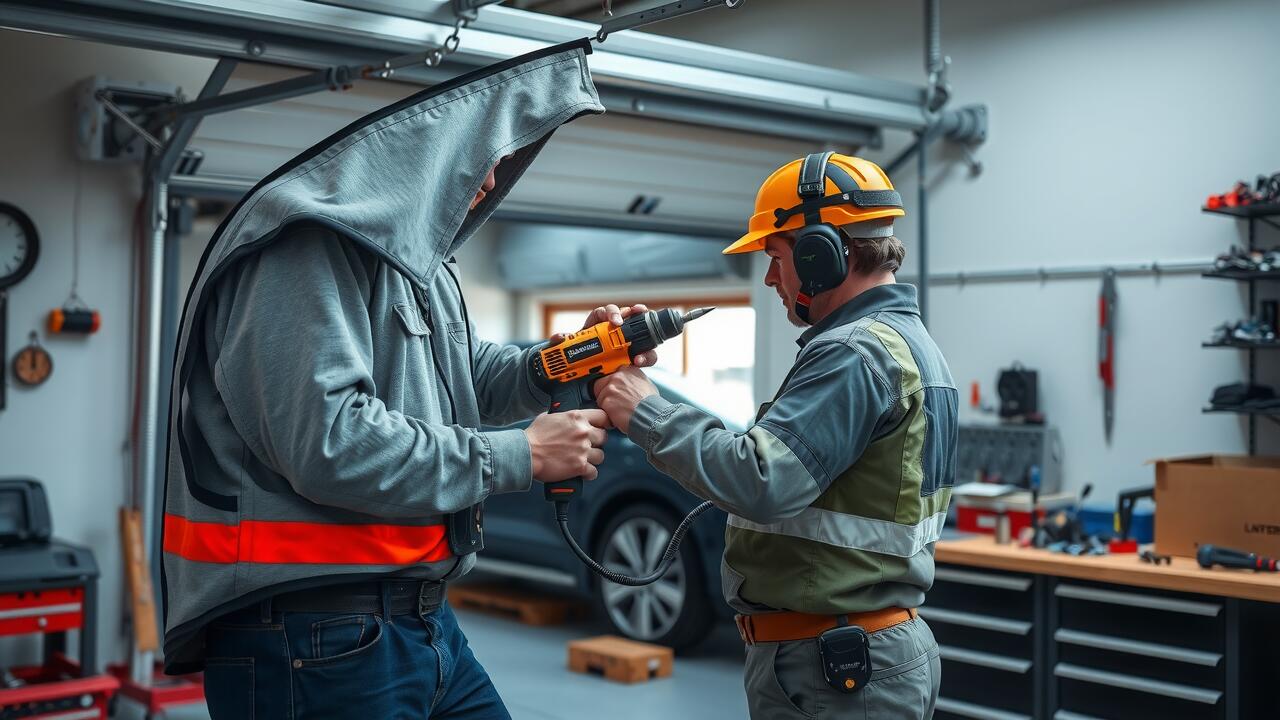
Table Of Contents
Evaluating the Garage Door Tracks
Inspecting garage door tracks is crucial for maintaining smooth and safe operation. Look for any bends, kinks, or misalignments that could hinder the door's movement. It’s important to check both the vertical and horizontal tracks to ensure they are secure and properly aligned. Any obstructions or debris in the tracks can also prevent the door from functioning correctly, so be sure to clear away any buildup that may have accumulated over time.
For those considering garage door repair in Ellsworth Air Force Base, South Dakota, ensuring track integrity is a step often overlooked. Regular maintenance involves checking for rust or damage that could impact performance. If the tracks appear to be damaged beyond minor repair, replacement may be necessary to maintain the efficiency and safety of the door's operation. Taking these steps can extend the lifespan of the garage door system and prevent more significant issues down the road.
Clearing Obstructions and Lubrication
Regular maintenance of your garage door opener includes clearing any obstructions that may affect its performance. Dirt, debris, or any foreign objects in the tracks can hinder smooth operation. Inspect the tracks closely and remove any items that could impede function. Pay attention to the area around the rollers and ensure there’s nothing stuck that might cause the door to jam or not close completely.
Lubrication is crucial to keep the moving parts of your garage door opener functioning properly. Use a silicone-based lubricant on the tracks and roller bearings to reduce friction and wear. Regularly applying lubricant can extend the life of your garage door components and enhance their performance. If problems persist despite these efforts, consider seeking professional assistance through garage door repair in Ellsworth Air Force Base, South Dakota.
Fixing the Drive Mechanism
When dealing with a malfunctioning garage door opener, diagnosing the drive mechanism is essential. Different types of drive systems, such as chain, belt, and screw drive, require specific attention. Inspecting these components for wear and tear can help identify the source of the problem. For instance, if a chain drive is loose, it may need adjustment or lubrication. Understanding the unique characteristics of each drive type allows for more targeted repairs.
If you're not comfortable performing repairs or inspections yourself, consider professional assistance. Garage door repair in Ellsworth Air Force Base, South Dakota, provides expert services to ensure your mechanism is functioning properly. Technicians can quickly identify issues, replace worn parts, and offer maintenance tips to prolong the lifespan of your garage door opener. Keeping the drive mechanism in top shape is crucial for the overall operation of your garage door system.
Understanding Different Types of Drive Systems
Garage door openers primarily operate using one of three drive systems: chain drive, belt drive, or screw drive. Chain drive systems utilize a metal chain to lift the door. They are known for their durability and strength, making them suitable for heavy doors. However, they can be noisy during operation. Belt drive systems use a rubber belt instead, resulting in quieter performance. This type is often preferred for residential garages where low noise is a priority. Screw drive systems function on a threaded steel rod that moves the door. They require minimal maintenance and are typically faster than other systems.
When addressing issues with any of these systems, understanding their mechanics is key to successful garage door repair in Ellsworth Air Force Base, South Dakota. Each system presents unique challenges and benefits, affecting how they respond to wear and tear. Regular maintenance may include lubrication of the drive system components and adjustment of settings to ensure smooth operation. It's important to recognize the specific needs and characteristics of the drive system in use to effectively troubleshoot and resolve issues.
Adjusting the Garage Door Limit Settings
Adjusting the limit settings on your garage door opener is essential for ensuring proper function. The limit settings determine how far the door opens and closes, preventing it from traveling too far and causing damage or malfunction. Most openers have two adjustment screws, one for the up limit and another for the down limit. Locate these screws on the motor unit, typically near where the power cable connects. Use a screwdriver to turn the screws in small increments, testing the door's movement after each adjustment.
If your garage door is not opening or closing completely, it may require a simple tweak to these settings. Be cautious while making adjustments. Start with minor changes and observe the door's response before making further tweaks. For more complicated issues or if the door continues to misbehave, consider seeking professional assistance. Garage door repair in Ellsworth Air Force Base, South Dakota, offers expertise in diagnosing and resolving these types of problems effectively.
Proper Calibration Techniques
Calibration of garage door limit settings is essential for ensuring the door opens and closes smoothly without causing damage. Begin by locating the adjustment screws on the opener unit. These screws typically control the door's travel distance. Turning the screws clockwise will extend the range of motion, while counterclockwise adjustments will shorten it. Make gradual adjustments, testing the door's movement after each change to achieve optimal performance.
When making these adjustments, safety should be a top priority. Disconnect the power to the opener before manually operating the door to prevent accidents. For those who feel uncomfortable with the calibration process or if issues persist, seeking professional assistance is advisable. Local services, such as garage door repair in Ellsworth Air Force Base, South Dakota, can provide expert help to ensure that your garage door operates correctly and safely.
FAQS
What are common signs that my garage door opener needs repairs?
Common signs include the door not opening or closing completely, unusual noises during operation, the remote not functioning, or the door moving unevenly along the tracks.
How can I safely clear obstructions from my garage door tracks?
To safely clear obstructions, first disconnect the opener by pulling the emergency release cord. Inspect the tracks for debris or obstacles, and carefully remove them using gloves to avoid injury.
What types of drive systems are commonly used in garage door openers?
The most common types of drive systems are chain drive, belt drive, and screw drive. Each has its advantages and disadvantages regarding noise, maintenance, and durability.
How do I know if I need to adjust the limit settings on my garage door opener?
If your garage door reverses before reaching the floor or does not open fully, adjusting the limit settings may be necessary. You can typically find these adjustments on the motor unit of the opener.
Can I fix my garage door opener myself, or should I call a professional?
Many minor issues can be fixed by homeowners with basic tools and knowledge, but if you're uncomfortable or the problem is complex, it's best to consult a professional for safety and proper handling.
